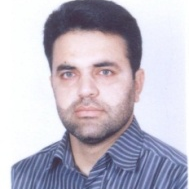
S. Asghar Gholamian
Work place: Babol University of Technology, Faculty of Electrical and Computer Engineering, Babol, Iran
E-mail: gholamian@nit.ac.ir
Website:
Research Interests: Computational Engineering, Engineering
Biography
SAYYED ASGHAR GHOLAMIAN was born in Mazandaran, Iran. He received the PhD degree in electrical engineering from K.N. Toosi University of Technology, Tehran, Iran in 2008. He is currently an assistant professor in the department of Electrical Engineering at the Babol University of Technology, Babol, Iran. His research interests include design, simulation, modeling and control of electrical machines.
Author Articles
Fuzzy Logic Control of Wind Turbine System Connection to PM Synchronous Generator for Maximum Power Point Tracking
By Hadi Sefidgar S. Asghar Gholamian
DOI: https://doi.org/10.5815/ijisa.2014.07.04, Pub. Date: 8 Jun. 2014
In this paper, a fuzzy logic control (FLC) is proposed for maximum power point tracking (MPPT) in wind turbine connection to Permanent Magnet Synchronous Generator (PMSG). The proposed fuzzy logic controller tracks the maximum power point (MPP) by measurements the load voltage and current. This controller calculates the load power and sent through the fuzzy logic system. The main goal of this paper is design of the fuzzy logic controller in the model of DC-DC converter (boost converter). This method allows the MPPT controller output (duty cycle) adjusts the voltage input to the converter to track the maximum power point of the wind generator.
[...] Read more.Cogging Torque Reduction in Surface Permanent Magnet Motors Using Taguchi Experiment Design and Finite Element Method
By S. Asghar Gholamian S. Rashidaee
DOI: https://doi.org/10.5815/ijisa.2012.11.04, Pub. Date: 8 Oct. 2012
In this paper, use the Taguchi experiment design method for achieving optimal design to reduce cogging torque and torque ripple of a surface permanent magnet motor. Cogging torque is one cause of vibration and noise, so reducing cogging torque is an important issue Results from simulations, indicate reduction of cogging torque and torque ripple while increasing the average of motor’s output torque. How do simulations and achieve the optimum design, by using the Taguchi method and simulations by using the finite element method has been done.
[...] Read more.Other Articles
Subscribe to receive issue release notifications and newsletters from MECS Press journals